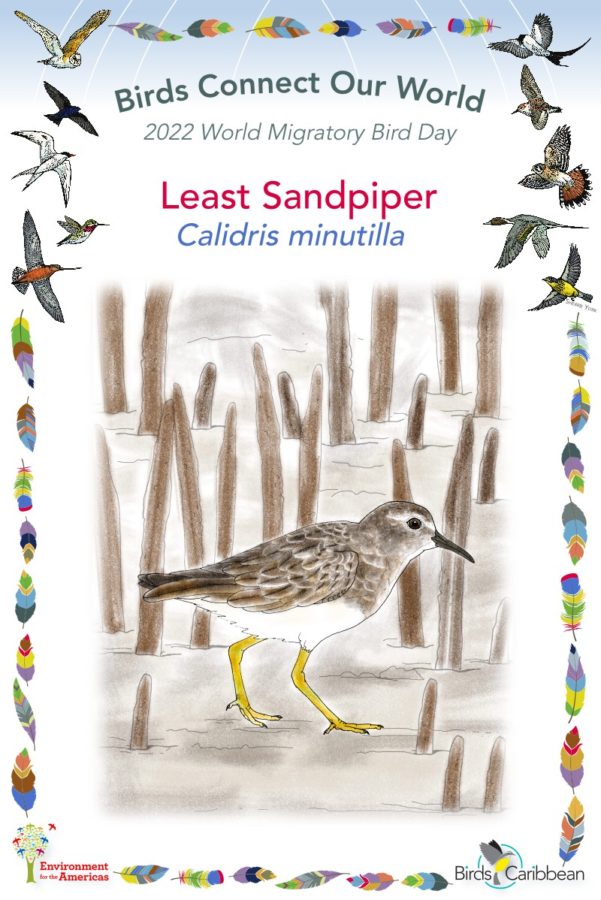Celebrate World Migratory Bird Day (WMBD) with us in 2022! This year’s theme is “Dim The Lights for Birds at Night”. Have fun learning about a new migratory bird every day. We have colouring pages, puzzles, activities, and more. Download for free and enjoy nature with your family at home.
Migratory Bird of the Day: Least Sandpiper
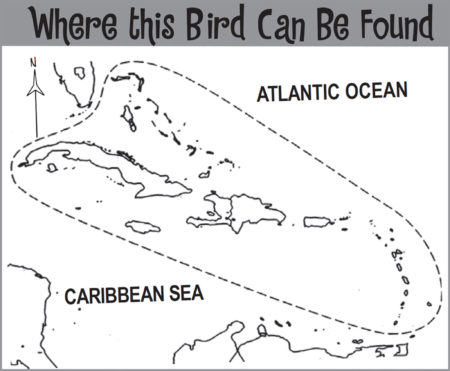 Meet our smallest Caribbean shorebird, the Least Sandpiper! Even the second part of their scientific name “Calidris minutilla” means “very small” in medieval latin. In fact, these tiny sandpipers, part of the group of shorebirds known as ‘peeps’ are not much bigger than a sparrow. These diminutive wetland inhabitants have a compact body, with brown or reddish-brown plumage above and white below. They have a thin slightly down-curved bill, which is black.
Meet our smallest Caribbean shorebird, the Least Sandpiper! Even the second part of their scientific name “Calidris minutilla” means “very small” in medieval latin. In fact, these tiny sandpipers, part of the group of shorebirds known as ‘peeps’ are not much bigger than a sparrow. These diminutive wetland inhabitants have a compact body, with brown or reddish-brown plumage above and white below. They have a thin slightly down-curved bill, which is black.
Their legs are quite short for a shorebird, and are a distinctive yellowish green color. Look out for these yellow-colored legs, they are a great way to tell Least Sandpipers apart from other very similar looking peeps, such as Western and Semipalmated Sandpipers, who have black legs. Take care though—their legs are sometimes covered in dark mud making the yellow difficult to spot! In addition to their slightly smaller size, yellowish legs and thin, slightly down-curved bill, another way to tell them apart from other peeps is to look for a warmer, browner tone to their plumage. Listen also for their distinctive cheep call.
Least Sandpipers might be small but that doesn’t stop them from making an amazing long-distance migration in the Fall. These birds head south from breeding grounds in subarctic regions in the far north of North America. They travel 1000s of km to winter in the Caribbean, Central and South America. Least Sandpipers will migrate in groups and once they arrive in their winter areas they also like to stay in a flock. They can be found in muddy areas of wetlands, both on the coast and inland. Here they can be seen in a typical ‘hunched over’ posture feeding on tiny invertebrates on the mud surface.
Least Sandpipers are listed as “Least Concern” by the IUCN. However, like all shorebirds they are threatened by disturbance from humans and habitat loss. During migration and overwinter these tiny birds rely on the food that wetlands provide for their survival. Protecting our wetlands is vital to helping conserve shorebirds like the Least Sandpiper! Learn more about this species, including its range, photos, and calls here.
Colour in the Least Sandpiper
Download the Migratory Birds of the Day Colouring Page! Use the picture above and the photos on this page as your guide, or you can look up pictures of the bird online or in a bird field guide if you have one. Share your coloured-in page with us by posting it online and tagging us @BirdsCaribbean #WMBD2022Carib
Listen to the calls of the Least Sandpiper
Least Sandpipers make a distinctive high-pitched “greeep!” call. You might heard this as a small flock takes flight.
Puzzle of the Day
Click on the images below to do the puzzle. You can make the puzzle as easy or as hard as you like – for example, 6, 8, or 12 pieces for young children, all the way up to 1,024 pieces for those that are up for a challenge!
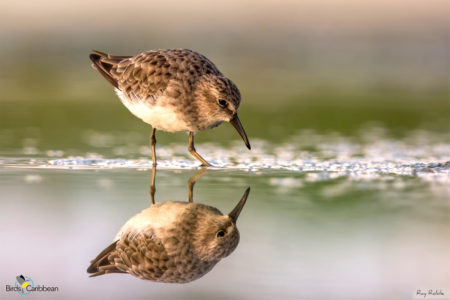
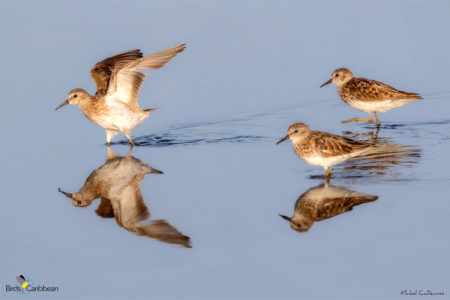
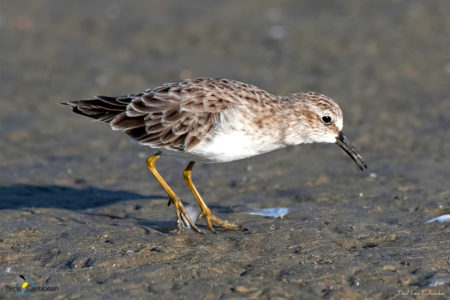
Activity of the Day
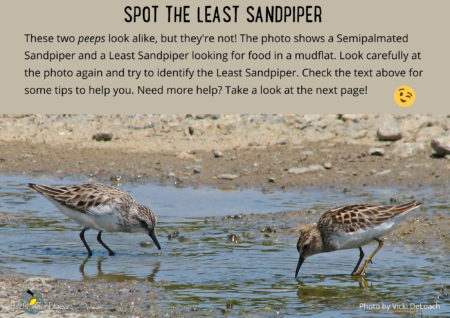 FOR KIDS: Test your shorebird ID skills with our “Spot the Least Sandpiper” challenge! Small sandpipers or ‘peeps’ as they are known can look very similar to each other. As well as their small size they share other features such plumage that is brown or grey above and white below, pointed black-coloured bills and a habit of feeding in muddy wetland areas. But Least Sandpiper so have things that help you pick them out from the crowd, read the text above and look closely at the pictures of Least Sandpipers we have shared. Once you’ve done this take a look and see if you can pick out the Least Sandpiper! (there are some extra tips for you on the second page if you get stuck). You can find the correct answer here.
FOR KIDS: Test your shorebird ID skills with our “Spot the Least Sandpiper” challenge! Small sandpipers or ‘peeps’ as they are known can look very similar to each other. As well as their small size they share other features such plumage that is brown or grey above and white below, pointed black-coloured bills and a habit of feeding in muddy wetland areas. But Least Sandpiper so have things that help you pick them out from the crowd, read the text above and look closely at the pictures of Least Sandpipers we have shared. Once you’ve done this take a look and see if you can pick out the Least Sandpiper! (there are some extra tips for you on the second page if you get stuck). You can find the correct answer here.
FOR KIDS AND ADULTS: Don’t forget that from September 1 – 7 it is the Global Shorebird Count – with World Shorebirds Day taking place on September 6. Take part by heading to your local wetland and counting all the shorebirds that you see, then making sure to share your list with ‘worldshorebirdsday’ on eBird Caribbean. Need some extra help with your shorebird ID? No worries, we have you covered, check out our shorebird resources page here. Find out more about the Global Shorebird Count and World Shorebirds day below.
Finally enjoy this video of a small flock of Least Sandpipers foraging at the waters edge- can you spot their yellow legs?

